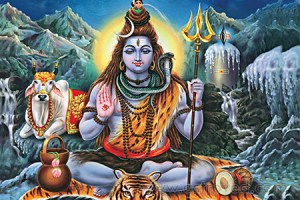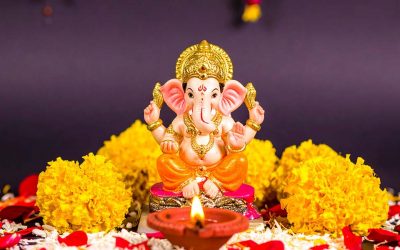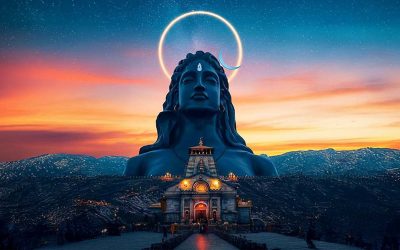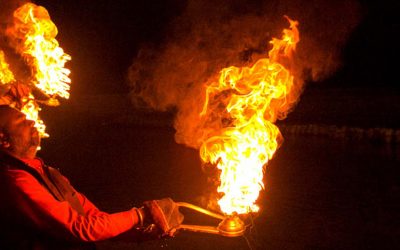The Significance of Mrityunjaya Homam in Vedic Traditions
Introduction
Maha Mrityunjaya Homam is a sacred fire ritual dedicated to Lord Shiva, the supreme deity of destruction and transformation in Hinduism. This powerful Homam is performed with the recitation of the Maha Mrityunjaya Mantra. This potent prayer invokes Lord Shiva’s blessings for protection, healing, and liberation from the cycle of birth and death. In this blog, we will explore the significance of Maha Mrityunjaya Homam, its step-by-step procedure, and the manifold benefits it offers devotees seeking spiritual upliftment and well-being.
Understanding Maha Mrityunjaya Homam
Maha Mrityunjaya Homam derives its name from the Maha Mrityunjaya Mantra, also known as the Great Death-Conquering Mantra. This mantra is found in the ancient Vedic scripture, the Rigveda (RV 7.59.12), and is dedicated to Lord Shiva, the cosmic healer and liberator. The mantra is as follows:
“ॐ त्र्यम्बकं यजामहे सुगन्धिं पुष्टिवर्धनम्।
उर्वारुकमिव बन्धनान्मृत्योर्मुक्षीय मामृतात्॥”
“Om Tryambakam Yajamahe Sugandhim Pushtivardhanam।
Urvarukamiva Bandhanan Mrityor Mukshiya Mamritat॥”
This mantra is a prayer for liberation from the fear of death and attaining immortality. It is believed to bestow divine protection, healing, and spiritual enlightenment on the devotee.

Benefits of Maha Mrityunjaya Homam
- Protection from Illness and Disease: Maha Mrityunjaya Homam is renowned for its healing properties and is believed to ward off illnesses, ailments, and chronic health conditions. The vibrations generated by the chanting of the Maha Mrityunjaya Mantra create a protective shield around the individual, safeguarding them from physical and mental afflictions.
- Longevity and Well-being: The home invokes Lord Shiva’s blessings for longevity and overall well-being. It promotes vitality, strength, and resilience, enabling individuals to lead healthy and fulfilling lives free from the fear of untimely death.
- Spiritual Evolution: Maha Mrityunjaya Homam is a potent tool for spiritual growth and transformation. By seeking the grace of Lord Shiva, the destroyer of ignorance and ego, devotees embark on a journey of self-discovery, inner purification, and enlightenment.
- Overcoming Obstacles and Challenges: The homam helps individuals overcome life’s obstacles, challenges, and adversities. It instils courage, determination, and fortitude, empowering devotees to face life’s trials with grace and resilience.
- Release from Karmic Bondage: The Maha Mrityunjaya Mantra’s power allows devotees to attain liberation (moksha) from the cycle of birth and death (samsara). The mantra dissolves karmic debts and attachments, paving the way for ultimate freedom and union with the divine.
- Blessings for Departed Souls: Maha Mrityunjaya Homam can also be performed for the peace and liberation of departed souls. It is believed to alleviate souls’ suffering in the afterlife and facilitate their journey towards higher realms of existence.
Step-by-Step Procedure of Maha Mrityunjaya Homam
- Sankalpam (Setting the Intention): The homam begins with the priest or officiant setting the intention (Sankalpam) for the ritual, invoking Lord Shiva’s blessings and seeking divine grace for the well-being of all participants.
- Ganapathi Puja: The ritual typically starts with the worship of Lord Ganesha, removing obstacles to ensure the smooth conduct of the homam and to seek his blessings for success and prosperity.
- Kalasha Puja: The Kalasha, a sacred pot filled with water and adorned with mango leaves and coconut, is worshipped as a representation of divine presence. It symbolizes abundance, purity, and auspiciousness.
- Purification Rituals: Various purification rituals, including the sprinkling of holy water (Punya Vachanam) and the drawing of protective yantras (Mandala Puja), are performed to cleanse the ritual space and create a conducive atmosphere for the Homam.
- Kindling of Sacred Fire (Agni): The sacred fire is kindled in the homa kunda (fire pit) using specific woods, ghee (clarified butter), and aromatic substances. The fire symbolizes the presence of the divine and serves as a conduit for transmitting prayers and offerings to the celestial realms.
- Invocation of Deities and Celestial Beings: The priest invokes the presence of Lord Shiva, along with other celestial beings and deities, through the chanting of Vedic hymns, mantras, and prayers. Flowers, fruits, grains, and incense are offered to the divine presence.
- Maha Mrityunjaya Mantra Japa: The core of the Homam involves the continuous chanting (Japa) of the Maha Mrityunjaya Mantra. The priest and participants chant the mantra with devotion, focusing their intention on seeking Lord Shiva’s blessings for protection, healing, and liberation.
- Ahuti (Offerings into the Sacred Fire): Throughout the Homam, offerings such as ghee, herbs, grains, and other promising substances are ceremonially offered into the sacred fire as a symbolic gesture of surrender and devotion. Each offering carries specific significance and invokes blessings for various aspects of life.
- Concluding Rituals and Prayers: The homam concludes by offering final prayers, blessings, and gratitude to Lord Shiva and other deities invoked during the ritual. Participants seek divine blessings for their well-being, spiritual evolution, and fulfilment of their prayers and intentions.
- Distribution of Prasadam: Prasadam, the blessed food or offerings that the divine presence has sanctified, is distributed among the participants as a token of divine grace and blessings.
Conclusion
Maha Mrityunjaya Homam is a sacred ceremony that invokes the blessings of Lord Shiva for protection, healing, and spiritual liberation. By reciting the powerful Maha Mrityunjaya Mantra and offering sacred oblations into the fire, devotees seek divine grace to overcome obstacles, attain longevity, and transcend the cycle of birth and death. As we immerse ourselves in the transformative energies of Maha Mrityunjaya Homam, may we awaken to the eternal truth of our divine nature and experience the boundless grace and compassion of Lord Shiva.






